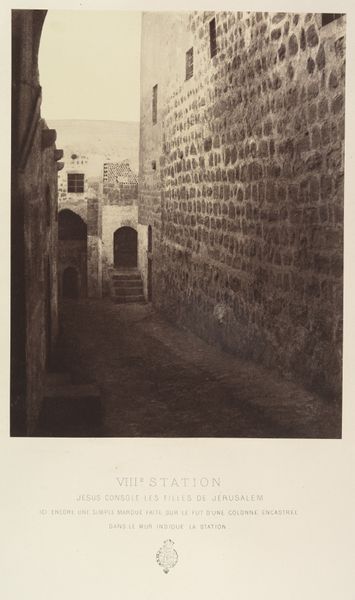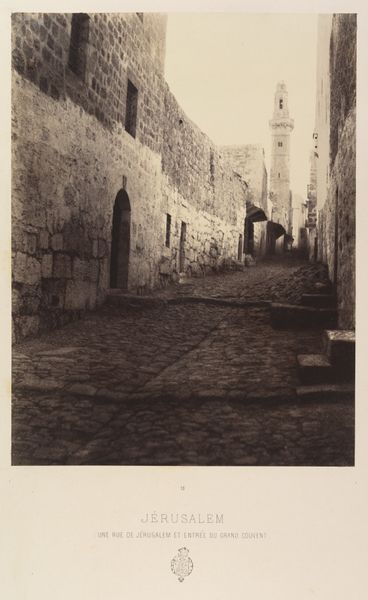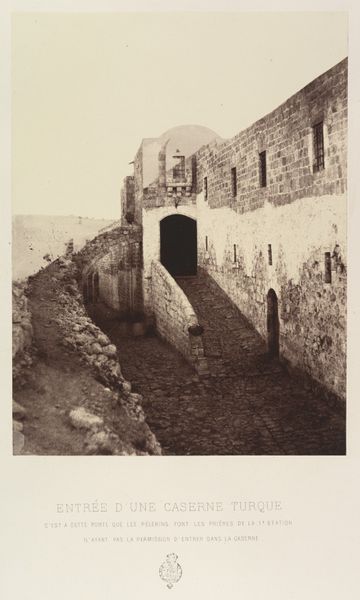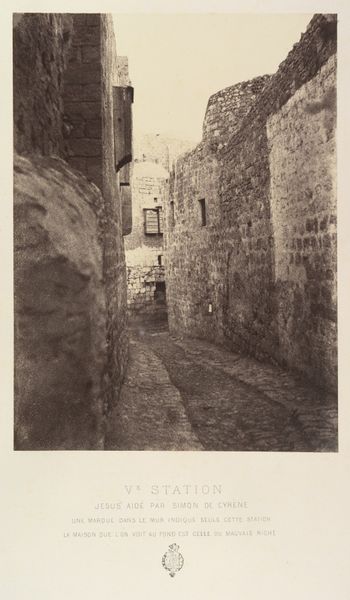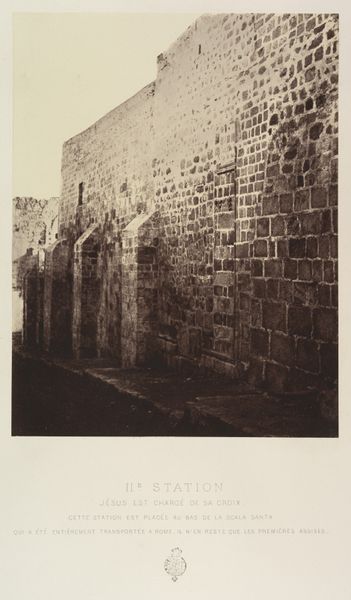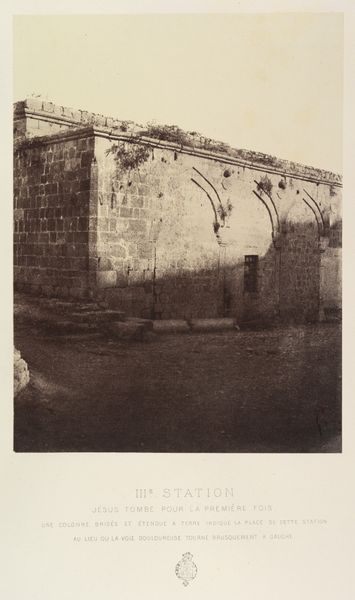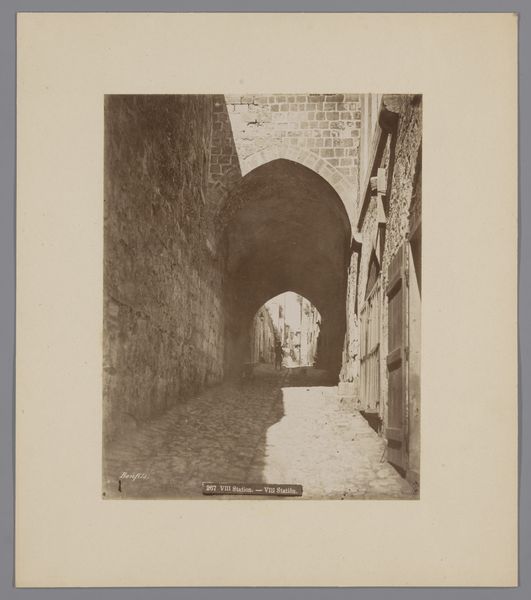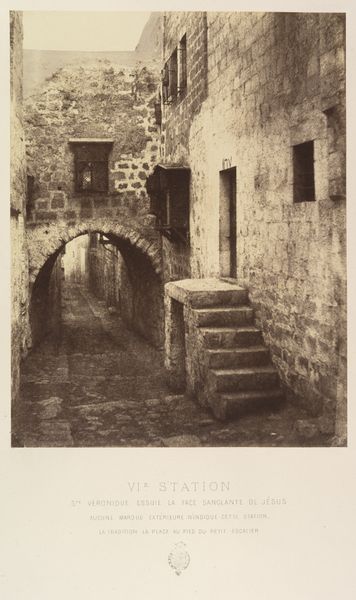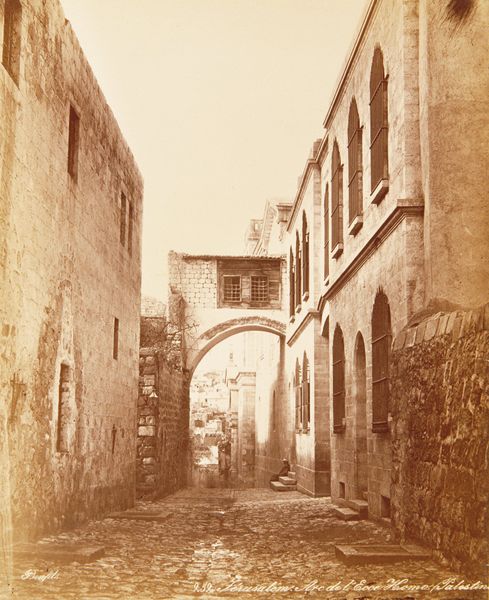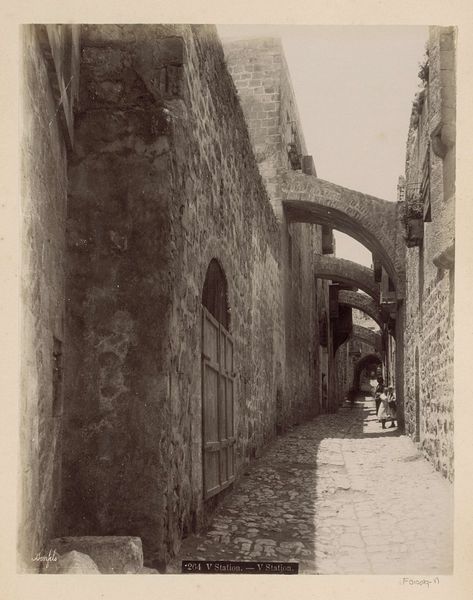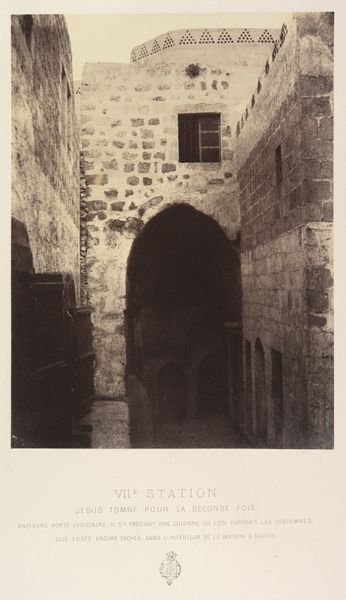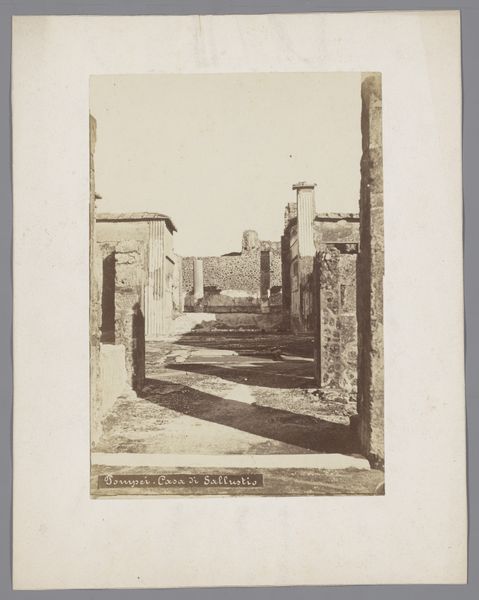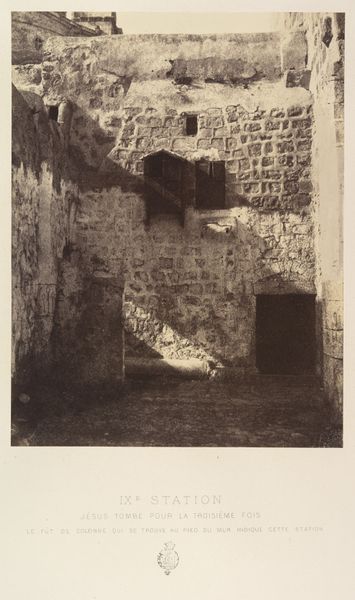
IVe Station. Jésus rencontre sa très Sainte Mère. Cette station est située a quelques pas a peine de la précédente. La tradition la place a l'arcade que l'on voit représentée ici 1860
0:00
0:00
photography
#
photography
#
arch
#
orientalism
#
cityscape
#
realism
#
building
Dimensions: Image: 10 11/16 × 8 1/4 in. (27.2 × 21 cm) Mount: 17 15/16 × 23 1/4 in. (45.5 × 59 cm)
Copyright: Public Domain
Curator: Looking at this image, I feel a quiet solemnity settle over me. There's a story etched into these stones, isn't there? Editor: Indeed. This is a photograph by Louis de Clercq, taken around 1860. The artwork's title is rather descriptive: "IVe Station. Jésus rencontre sa très Sainte Mère. Cette station est située a quelques pas a peine de la précédente. La tradition la place a l'arcade que l'on voit représentée ici". Essentially, it depicts a station of the cross in Jerusalem, the place where, according to tradition, Jesus met his mother during his Passion. Curator: It’s striking how de Clercq has framed the arcade. It's almost like a stage, isn't it? A space waiting for the drama to unfold. And the light... it just kisses the rough stone, creating this feeling of age and timelessness. The way the road just winds into the distance… it's quite evocative, in a desolate way. Editor: Absolutely. De Clercq was working in a period where photography was seen as a very objective medium. He aimed to capture the "real" Jerusalem, documenting historical sites with accuracy, often employing the aesthetics of realism. Notice how the image prioritizes clarity of detail and architectural elements rather than focusing on purely aesthetic concerns. The photo was produced to reinforce the socio-political underpinnings of the Church at the time. The images presented biblical locations to the world and those who may have had very specific political or religious views concerning Jerusalem. Curator: It's strange to think about "realism" when dealing with faith, though. Photography, especially then, carried this air of scientific truth. But here, it’s documenting something so deeply personal, spiritual even, not so tangible to science, like a mother's grief. Do you suppose that duality was intentional? Editor: Interesting. Maybe De Clercq was simply using the available tools to depict the existing tradition, making it accessible and, perhaps, more real to a wider audience. The photographic series functioned as evidence of Jerusalem and, in that context, provided more symbolic reinforcement to the values that already were in existence at the time, ones perhaps not shared across all borders. It reinforced particular Christian narratives during a period of political tensions and increasing Western interest in the Middle East. Curator: It leaves me contemplating how a single image can hold so much, how one shot can be a historical document and yet touch something ancient in our souls, like grief, faith and hope. Editor: I agree, art gives us glimpses of shared pasts while being ever subjective in meaning.
Comments
No comments
Be the first to comment and join the conversation on the ultimate creative platform.
